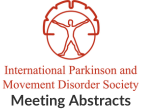The relationship between body composition and postural instability in idiopathic Parkinson’s disease
Objective: There appears to be no research that has focused on the relationship between body composition phenotype and postural instability in IPD. The aim of…Research of vestibular evoked myogenic potentials (VEMP) in the diagnosis of postural instability in Parkinson’s disease
Objective: To investigate the sacculocervical reflex of patients with PD with the assessment of changes of the parameters of VEMP depending on the severity of…Risk factors associated with postural changes in Parkinson’s disease
Objective: To quantitatively assess posture in a large cohort of patients with PD in association with demographic features, laboratory data and life style and to…Characteristics of patients initiating droxidopa for the treatment of neurogenic orthostatic hypotension (nOH)
Objective: To understand the characteristics of patients initiating droxidopa therapy for the treatment of neurogenic orthostatic hypotension (nOH). Background: nOH is defined as a fall…Influence of lateral wedges on postural control in patient with Parkinson’s disease
Objective: The purpose of this study is to evaluate the effect of lateral wedge to balance in Parkinson's disease. Background: Although postural instability is the…Coupling between visual information and body sway in people with Parkinson’s disease
Objective: Investigate postural control performance and the coupling between visual information and body sway in people with Parkinson's disease (PD). Background: PD causes several changes…Impact of neurogenic orthostatic hypotension on healthcare utilization and costs associated with falls in Parkinson’s disease
Objective: To compare demographic and clinical characteristics, rates, and costs of medically attended falls among patients with Parkinson's disease (PD) and probable PD and neurogenic…The relationship between cognitive aspects (education status, executive function and verbal fluency) and motor aspects (balance and gait) in patients with Parkinson’s disease
Objective: The aim of this study was to verify if there would be correlations between cognitive variables (educational status, executive function, verbal fluency) and motor…New therapeutic algorithm for abnormal posture in Parkinson’s disease and related disorders
Objective: To establish the simple therapeutic algorithm for abnormal posture in Parkinson's disease (PD) or related disorders. Background: Camptocormia or dropped head are sometimes accompanied…Quantification of postural stability in Parkinson’s disease patients utilizing mobile technology
Objective: To validate the use of a mobile device and an associated biomechanical outcome to objectively quantify postural stability in Parkinson's disease (PD) patients. Background:…
- « Previous Page
- 1
- …
- 13
- 14
- 15
- 16
- 17
- …
- 19
- Next Page »
